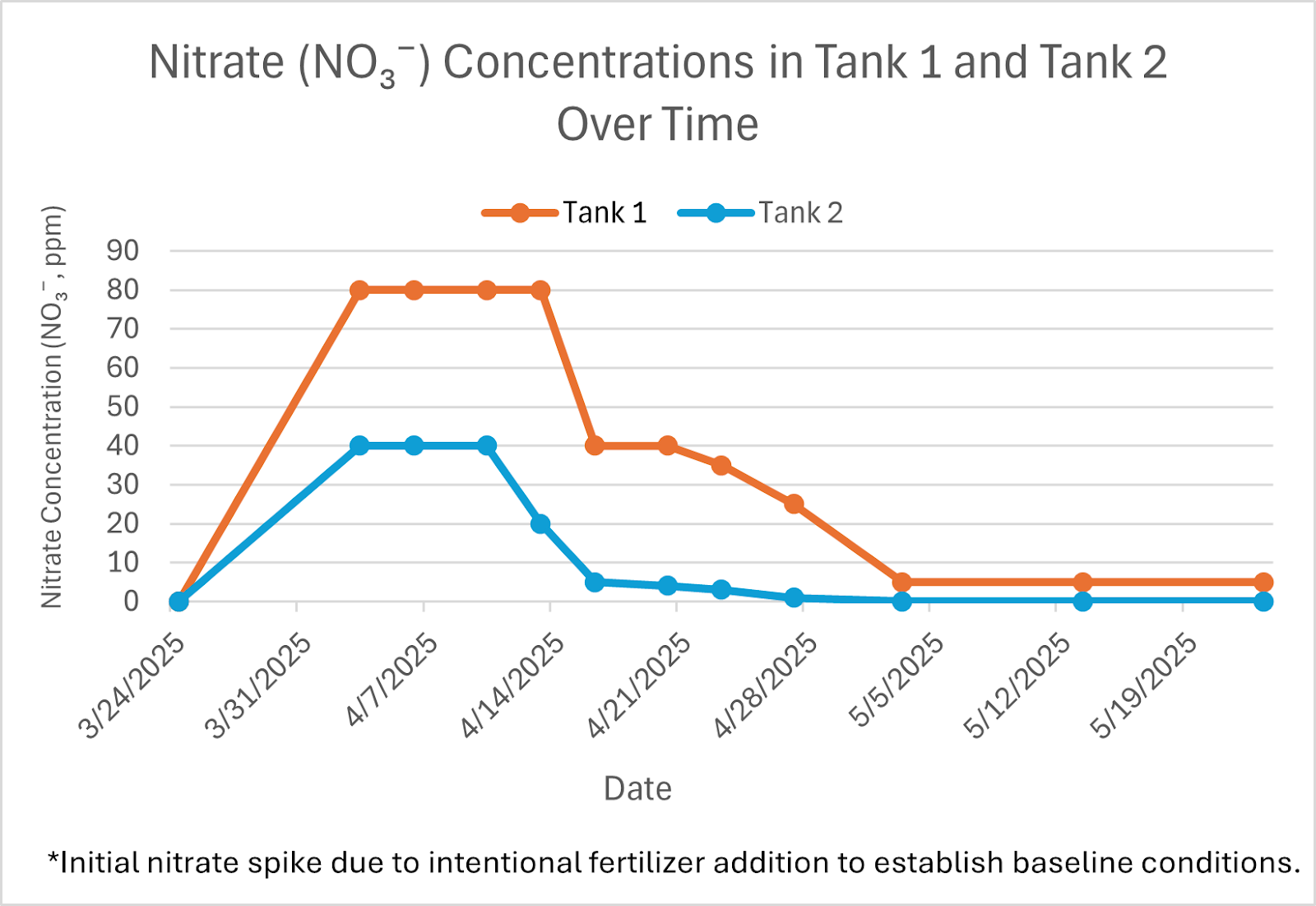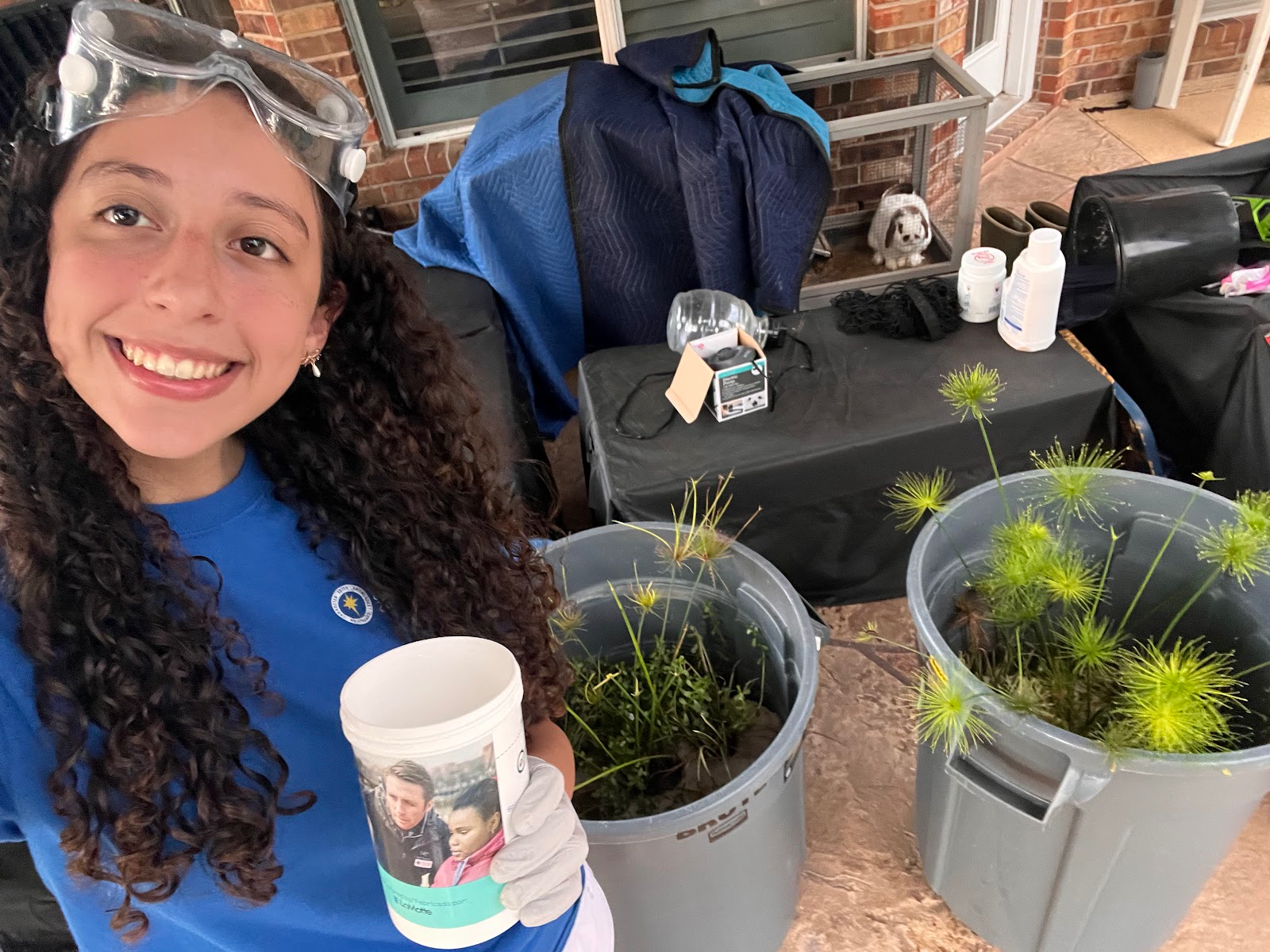This blog post was written by Valeria Suarez Tabares, a 2024-2026 EarthEcho Lead Water Challenge Ambassador and a 2022-2023 Water Challenge Ambassador.

Here in Houston, waterways shape our daily lives, driving our economy through ports or providing green spaces and habitats. Using the knowledge I have acquired from learning through the Water Challenge Ambassador program, I was able to identify a rampant problem waterways face in my community that now seems to be like a widespread issue globally: algal blooms caused by industrial runoff.
Because of this, I wanted to step into my role as a community scientist to collect data and implement a solution that could address this issue. Then, The BioFloat Lab was formed. My experiment became a symbol of how young people can apply scientific thinking and problem-solving to worth-solving environmental challenges in our world.
After weeks of research, I finally found an effective way to purify our waterways naturally: floating treatment wetlands. Floating treatment wetlands are small, artificial islands that allow aquatic emergent plants to grow in water. Their roots grow through the floating islands and down into the water, creating dense columns of roots that act like filters and absorb excess nutrients. My project focuses on engineering and constructing these floating wetlands to assess their efficiency in nutrient remediation.
Experimental Procedure:

To test their efficiency, I constructed two large mesocosms. I mimicked the impaired conditions found in the Buffalo Bayou that I had previously observed by preparing two large water tanks with different concentrations of nitrate and phosphate by manually adding fertilizer. For the floating treatment wetlands, I used poly-flo material cut into layered rectangles. Poly-flo is a material made out of high-quality fibers. Often used in hydroponics, this material is lightweight, durable, porous, and water-resistant, with an open character that allows for high volumes of water to pass through while providing a high surface area for beneficial bacteria colonization. Essentially, this material allows for biological filtration to occur. I kept this layered poly-flo raft afloat by adding marine flotation foam for buoyancy. Subsequently, I carved holes into the islands to hold the aquatic plants, which I obtained from a local aquatic plant nursery. With the guidance of the employees at the nursery and by referencing some external research I conducted online, I meticulously selected species proven to be effective in nutrient uptake.
The species of plants I chose for my project were:
- Bacopa monnieri
- Bacopa caroliniana
- Acorus gramineus ‘Variegatus’
- Cyperus haspa
- Juncus effusus spiralis
Each raft supported each of these five plants.

Once I placed the wetlands on the water and launched the project, I monitored them every third day. Using the EarthEcho Water Challenge testing kits, refractometers, waterproof tester meters, and chemical drops, I measured the following parameters of the water:
- Nitrate (NO₃⁻)
- Phosphate (PO₄³⁻)
- Dissolved Oxygen
- Turbidity
- pH
- Temperature
- Total Dissolved Solids
- Salinity
I tested every third day, jotting down my qualitative and quantitative observations into my notebook. I observed trends over two months and did a thorough comparison of before, during, and after the floating treatment wetlands were implemented.
Impact and Metrics

I am happy to announce that The BioFloat Lab was effective both scientifically and in its community reach!
- 97% removal efficiency rate for nitrate achieved by the floating treatment wetlands.
- 130 girls ages 14-17 were introduced to my project through a presentation at my high school,where I was able to promote women in STEM and environmental science.
- 70 participants of all ages at the Gulf Hope in Action Youth Summit hosted by the Gulf Reach Institute were motivated by my project to begin their own environmental initiatives.
Reflection and Learning
Despite its many successes and accomplishments, this project also encountered a few challenges, like any other experiment. One major error in my study was the dosing of phosphate. Attempting to mimic the conditions of the Buffalo Bayou, I added the phosphate concentrations at levels that exceeded the upper detection limit of the testing kit I was using. As a result, even if the floating treatment wetlands were uptaking phosphate, I could not quantify the reductions. This limited my assessment of phosphate remediation efficiency, unfortunately making the results inconclusive.
However, the nitrate concentrations were luckily maintained within the measurable range. The floating treatment wetlands achieved a 97% removal efficiency rate for nitrate, demonstrating how it is a probable solution to water pollutants.
The model I created is something that can easily be replicated, improved, and implemented on a larger scale in a real setting. I am grateful for this project because it helped me inspire others to pursue what they love, offered a solution to restore our planet’s biodiversity, and taught me about grit, resilience, critical thinking, and communication.

I am endlessly thankful for the opportunity to have grown through my experiences related to ocean conservation, and I am eager to continue exploring STEM-based solutions to protect our precious waterways and continue growing as a leader in the ocean advocacy sphere. If you have any questions or would like to connect, feel free to reach out to my email valeriasuareztabares@gmail.com.

